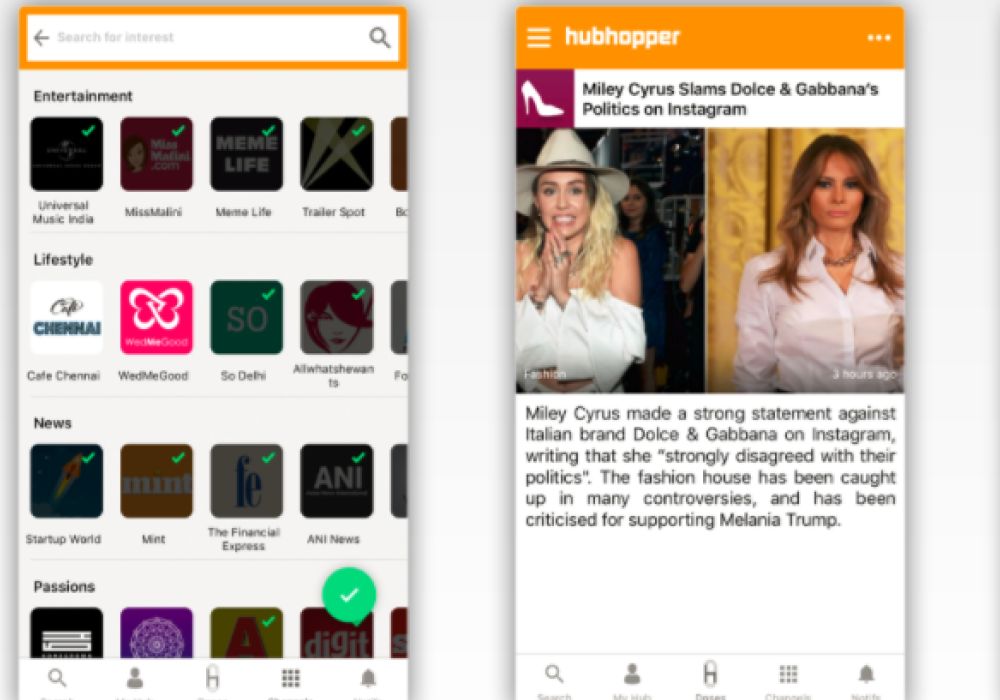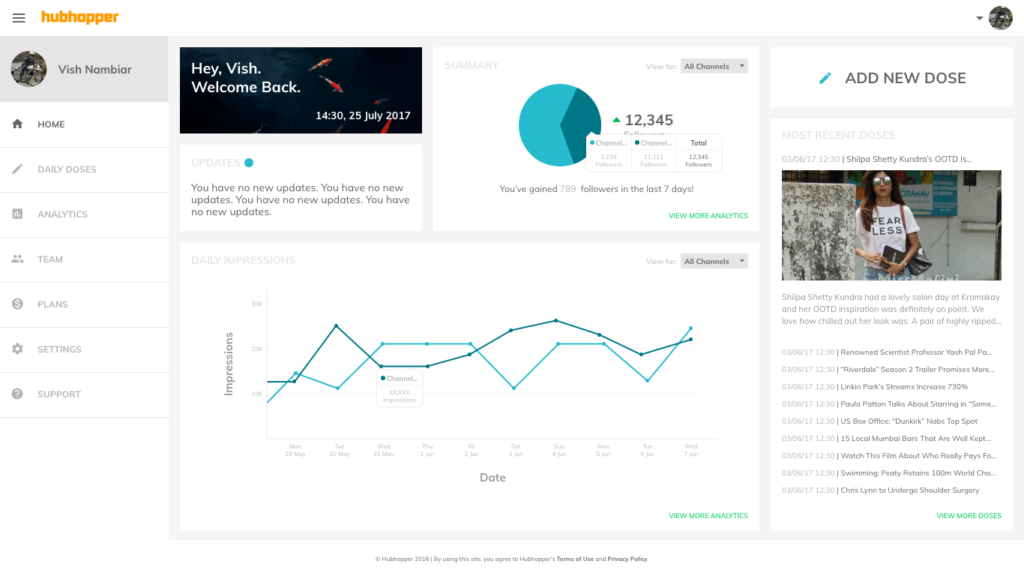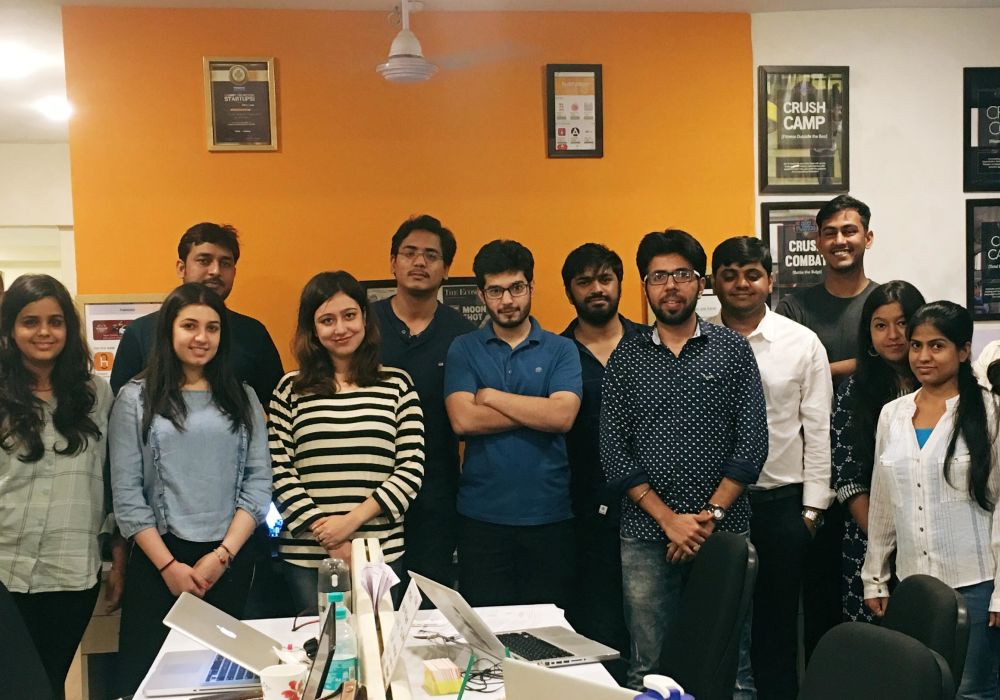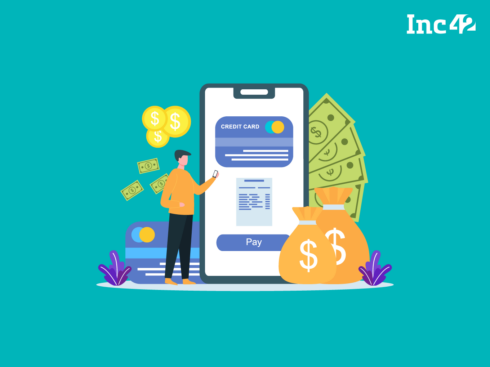SUMMARY
Hubhopper Was Launched By Gautam Anand Two And A Half Years Ago
“Creating content is only 5% of the job done for content publishers. The other 95% is a whole host of other things that a publisher is not prepared for,” says Gautam Anand, co-founder and CEO, Hubhopper.
Digital media has changed the way content is disseminated (or spread), because unlike traditional media, digital media is interactive and two-way. One does not merely read the news anymore, one can comment, like (or dislike), share and generally become part of any story. Content has evolved beyond just spreading this information, it has now become a repository of talent, in text, audio, video on basically every topic under the sun. Digital content publishers or new age media, thus, have a number of roles in the debate over social conversation: to generate revenue like any business, to provide content (news, features, research) across available media such as images, video, audio, and text.
Combine this fluidity of roles with the burden of retaining user attention amongst 100 Mn websites worldwide and a real problem begins to emerge. The problem though is an interesting one, i.e. presenting content in a personalised manner for different types of content consumers. And further track user activity to scale up. This is the problem that personalised content disseminator Hubhopper is trying to solve through its AI-based Saas platform.
Delhi-based Hubhopper was launched about two and a half years ago by brothers Gautam and Uday Anand. It is currently available across all digital mediums – website, mobile website, and apps (iOS and Android). The Android app in particular has seen success when it was launched on the Google Play Store and become something of a trendsetter, in the first few days itself. Hubhopper caters to both sides of the content value chain – content publishers or content creators and content consumers. Hubhopper does not distinguish between larger and smaller content publishers, for this purpose.
The startup has managed to raise three rounds of angel funding for a total amount of $310K (INR 2 Cr), the latest of which came in February 2017 and boasts of a 20-member team.
HubHopper: Humble Beginnings
While both Gautam and Uday come from a traditional writing background, their journey of founding Hubhopper stemmed from a very simple problem. News feeds, RSS feeds for large publishers required Gautam to switch portals and platforms in order to get all the news/information he wanted depending on the subjects of interest – such as sports, entertainment, politics, literature to name just a few. Existing content aggregators operated on a closed loop of providing content from various sources in a set format.
“Anybody who has a multitude of interests has to go through different channels and undergo different user experiences with very little continuity for content consumption. While social media is a little kinder in terms of personalising content feed, the algorithm does not work in real-time in order to provide the most localised consumption experience.”
Also, a user would like a particular kind of content provided by a publisher but not bother to download the app in order to save mobile storage space.
So, what Hubhopper looks to do is save a user’s time, effort, and mobile phone storage space by bringing different content creators on the same platform in order to provide a continuous and managed user experience.
Users can customise their Hubhopper feed on interests such as lifestyle, news, tech-related or individual channels by publishers and various content creators. They will get all their content from their favourite publishers in a short news format consisting of 60 words. The platform comes equipped with a large amount of social features as well as following a particular channel/sub-interest is possible too.

User profiling takes place at the back end based on a binary algorithm that has profiled users into 32 unique categories and each of these users are given personalised consideration when it comes to communication via emails, push notifications etc. The app currently claims 191K downloads on the Apple and Google Play stores, from the 25K it had when it first launched.
For the content publishers, the problem is slightly more complex but interesting. “Most content creators, aka publishers are fantastic at creating content – be it a small blogger or YouTube vlogger or a major publication. But, creating content is such a small part of the overall business scaling pattern. As a publisher, most aren’t prepared for attribution analysis and data management.”
He mentions factors such as targeting, segmentation, performance, CRM (client relationship management) and UX that make up the backend of a digital content platform. A lot of which is difficult for smaller and mid-sized publishers to manage on their own.
The idea is to allow content publishers to focus on doing the thing they are excellent at – create meaningful content. “We want to enable publishers to focus on producing this content which we will disseminate on the front end, while we manage the entire backend for them through our platform.”
How The Hubhopper Platform Works For Content Publishers
For the publishers, Hubhopper follows a SaaS model and is priced between INR 2,999-INR 9,999, depending on the needs of the clients. Once publishers create a channel and it gets approved they have the ability to edit and schedule their content in 60-word short-news format from a simple dashboard. Those with a video resource (YouTube, Vimeo etc.) can share their pre-existing video content too.
With respect to data mining, Hubhopper helps publishers track user activity through source clicks, impressions versus page views/clicks, optimal interaction times, popular action on content being shared etc. taking place on their channel. All of this data is presented in a dashboard and can be parsed to gain the most insights for return of investment in the churn of the people on the platform.
Publishers can utilise Hubhopper in two ways. First, to understand more of what kind of users are engaging with their content and how to tackle challenges prevalent in those. Secondly, they can use Hubhopper to monetise for brand partnerships, by using the MAUs coming from the platform and not having to worry about acquiring these users as the platform looks to do the work for them on the backend.

As Gautam shares, smaller publishers come for the simplified and unified user experience, while mid-level content creators get all the analytics they require to scale in one place. Larger publishers, on the other hand, use the platform to reach younger target audiences in the 18-35 age bracket, in order to remain digitally relevant in the years to come.
At last count, Hubhopper claimed to have onboarded 100 publishers ranging from small content creators with a lifestyle blog or a YouTube channel to larger names such as Mint, Miss Malini etc. The plan for 2017 is to double this number.
Being Non-Techies Helped Us Build Out The Platform For Content Publishers
While on the one hand, the Anand brothers were trying to understand the various pain points that needed a solution on the content supply chain – they encountered a problem which strikes all non-techies. That of building out an actual MVP (minimum viable product). “The first one year, we were completely bootstrapped and spent it on breaking and rebuilding the platform, out of a balcony.”
We weren’t techies when we began so we had to self-educate ourselves. This was a bane back then, because we had to move a lot of gut-based decisions into data-based decisions. And that wasn’t easy. Of course, it helped us to think outside the box which is a boon now.”
UI/UX was also another aspect of the product that they needed to get a handle on. Gautam refers to the tongue twisting Facilitator Attributor Tester – which was basically an interesting way to profile the content (based on amount and subject of interest and channels) users preferred in order to refine it to a fine degree. “It was exactly as difficult as it sounds,” Gautam claims with a chuckle.
Countering The Effects Of A Personalised Content Bubble
Digital media’s biggest strength is that it is interactive, two-way, working on a user’s smartphones, laptops, and tablets. This is also problematic when fact-based stories on digital media platforms become polarised between any two opinions, X and Y. And in traditional media, at least, all kinds of opinions have been shared, whether we like it or not and agree with them or not. Digital media has taken away that 360-degree perspective and left us in our little bubbles, where we all just consume exactly the kind of content we want, reinforcing our own opinion as fact.
Content dissemination when personalised extremely can attenuate this bubble effect, where a certain kind of opinion gets reinforced as fact. For instance, for anyone using Facebook back in November 2016 and following political website Politico, the Presidential race was in the bag for Hillary Clinton until the day of the elections. This kind of bubble is dangerous as it makes for polarised users who are fed a steady diet of localised and personalised content. This is a continuous and conscious challenge for any responsible digital media platform. So, how does Hubhopper plan on tackling this issue?
 Gautam says, “By opening up our platform to content creators everywhere, and of all sizes, the content will inevitably become more granular, which will allow for further and more specific personalisation, but it will also widen the range of genres, categories and interests that a user has to browse through.”
Gautam says, “By opening up our platform to content creators everywhere, and of all sizes, the content will inevitably become more granular, which will allow for further and more specific personalisation, but it will also widen the range of genres, categories and interests that a user has to browse through.”
He also talks about the eventual creation of a 360-degree holistic consumption experience through trending, featured, recommended and sponsored channels and stories to combat the so-called personalisation bubble.
Hubhopper On Tackling Competition
The startup faces competition on two fronts. With content disseminators such as InShorts, Viral Shorts and more, the competition is on the way the content is disseminated i.e. a short news format with built-in shareability and interactivity. But Gautam notes that these platforms use in-house teams to build content that is shared on other platforms, in effect, operating like a news dissemination platform but in crisper format.
Hubhopper also faces competition from larger content aggregators such as Flipboard, UC News, Dailyhunt, Google News, Apple News, and more. These platforms have large amounts of crawler bots which cherrypick news without any method and present a thumbnail and the first few lines of stories in a mass-produced manner. It is up to the reader’s discretion to personalise the feed and then to read past the first few lines if they feel the need. The bots also end up picking up content from the bigger publishers, giving them a leg up in the user acquisition game.
Gautam opines that what sets Hubhopper and works in its favour is that it is not a closed loop platform – the publishing end is open for content creators of any size or shape to get onboarded and this leads to a holistic form of content creation, without prejudice. With regard to users, what it does is, it allows them to weed out the good publishers from the less-reliable ones through recommendations and ratings while providing a unique and customised experience in the way the content is presented as well as consumed.
Perhaps, it is this differentiation on multiple fronts on the content supply chain that has allowed Hubhopper to look forward to claiming 1 Mn MAUs by the end of 2017. The long-term plans with respect to publishers include having 10,000 content publishers on the platform, by providing such support as heat mapping, checking for user propensity and more.
Gautam is definitive in wanting to improve the UX for users, especially in aiding the discovery of new content creators in the areas of interest. The startup is also looking to tie up with smartphone OEMs (original equipment manufacturers) and telcos to bring Hubhopper and the way it approaches content to their native ecosystems.
Editor’s Note
In the last few years, the lines between content and journalism have blurred to become virtually indistinguishable from each other. In fact, this truth-out article chronicles the rise of ‘content marketing,’ which is expected to globally reach $313 Bn by 2019, double of what it was in 2014. The number of news stories has also increased year on year by 36%. Content consumption has also changed patterns, most notably in the last two years, due to the availability of content on multiple platforms. In fact, user attention spans have dwindled to almost eight seconds on page views, according to this New York Times report.
Considering all these figures, it can even be extrapolated that in a country like India which is yet to see a second wave of Internet consumers, especially in local languages, digital media is still to gain mastery over the delicate balance between content, journalism and the difference between both.
It is extremely important for content consumers and content publishers to keep in mind that good, quality content is the responsibility of the creator and disseminator.
Content aggregators such as Hubhopper, InShorts, and even larger players such as Flipboard, UC News are trying to make it easier for Internet users to access the plethora of content. They do so to create conversations around them in order to increase engagement and user attention share. The real challenge for content publishers should not be that of amassing large numbers of users or even providing meaningful content. The real challenge in the bloated world of Internet information would be to create an informed digital platform of users that can engage in meaningful debate on topics of their choosing by cutting through the white noise of content that has distinct form but no style whatsoever.



























